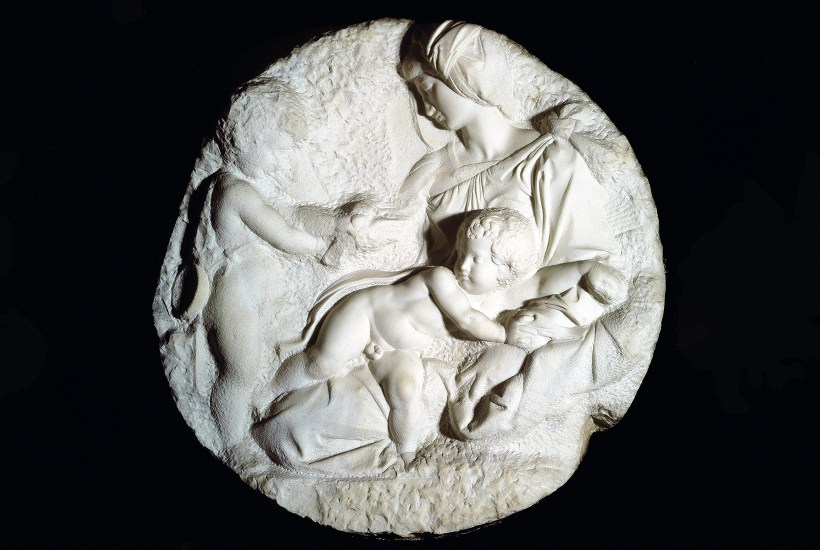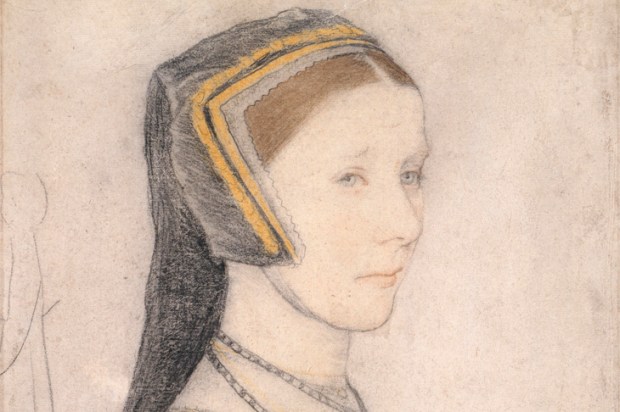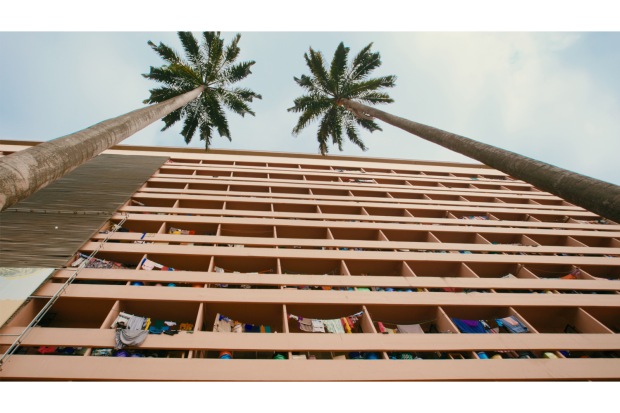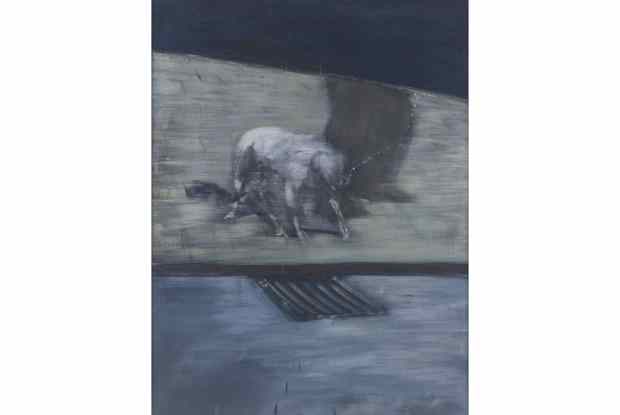How much does a Michelangelo cost? It is, as they say, a good question, meaning: nobody really knows. The reason for this odd state of affairs is that almost none of them have ever been bought and sold on the open market, which is how the prices of most things are established. It’s hard to think of many examples of his sculptures being traded in that way over the past 500 years.
Strangely, the main exception is the ‘Taddei Tondo’, otherwise known as ‘Virgin and Child with the Infant St John’, which, reportedly, some members of the Royal Academy are suggesting the RA should sell. If that were to happen, which I very much hope it does not, we might learn the answer to the conundrum. Probably it would be a very large sum indeed.
Of course, during his lifetime Michelangelo was paid for his works, and handsomely so, by his patrons, who mainly comprised a series of popes. By the time he died in 1564, at the age of almost 89, he was probably the richest artist who had ever lived (and possibly retained that position until Damien Hirst came along).
After his death, a chest was discovered in his austere bedroom, stuffed with coins and bullion amounting to roughly the sum the Medici family had recently spent on buying the Pitti Palace. But this accounted for less than half the artist’s assets, the remainder having been invested in land and houses around Florence.
However, as the great man once angrily explained to his nephew, he had never ‘kept a shop’. By that he meant he hadn’t produced paintings and carvings on spec for any passing duke or cardinal. Most of his marbles, and nearly all his paintings, have always been immovably fixed to buildings in Rome and Florence.
Even during his lifetime it was extremely hard to get your hands on a Michelangelo. The wealthy and powerful begged him for something — occasionally adding that anything would do, provided it was by him — but very few were granted their wish.
The tally of Michelangelo sculptures outside Italy is consequently very small. Leaving aside disputed attributions, there are just four: a magnificent early Madonna in Bruges, commissioned directly from the artist by a couple of Flemish merchants; two Slaves in the Louvre (a gift to the French king); and the ‘Taddei Tondo’. The last was originally owned by a young Florentine cloth merchant connoisseur of avant-garde art named Taddeo Taddei, who may have commissioned it or bought it around the time it was made — perhaps c.1503.
This was an extraordinary moment, art-historically speaking: for a few years Michelangelo and Leonardo da Vinci, his senior by more than two decades, were both at work in Florence, each engaged on projects that were as celebrated as any ever attempted by an artist. While one was carving ‘David’, the other began the ‘Mona Lisa’. By and by the Republic of Florence set up a contest between the two: each was to paint a huge battle scene for the council chamber in the Palazzo Vecchio.
The two men ended up loathing each other, as powerful and dissimilar talents are liable to do. There is a vivid description of Michelangelo insulting Leonardo in the street, leaving him red in the face with fury. But before there was enmity there may, for a brief period, have been warmer relations and there was certainly mutual influence.
The main evidence for Leonardo’s effect on the younger artist is the ‘Taddei Tondo’. This Madonna is the most gently feminine Michelangelo ever sculpted, and the whole composition is softly, almost atmospherically pictorial. The obvious source was Leonardo’s compositions of the same date such the ‘Madonna of the Yarnwinder’. Then, in a sort of aesthetic chain reaction, Michelangelo’s relief had a visible effect on Raphael, the third towering figure in what used to be called the High Renaissance.
Raphael was also a friend and protégé of Taddeo Taddei, and obviously familiar with his collection because he drew a copy of the ‘Tondo’. Michelangelo was extremely touchy about other artists lifting his ideas, and particularly suspicious of Raphael who was eight years his junior and a brilliantly fluent assimilator of other styles. ‘What he knew of art,’ Michelangelo wrote years later and not entirely fairly, ‘he learnt from me.’ So if you want to find a single object that demonstrates the interconnections between the triumvirate of early 16th-century Italian art, this is it.
Curiously, the ‘Tondo’ is also almost the only fully authenticated Michelangelo marble to have changed hands in the past five centuries. Constable’s patron, Sir George Beaumont, bought it in Rome in 1822 from a French artist named Jean-Baptiste Wicar. As Alison Cole, author of a study of the ‘Tondo’, has related, Wicar had managed to get it out of the Taddei family during the years of Napoleonic rule in Italy. He had been one of the commissioners in charge of expropriating art from Italy to stock
the museums of Paris, and so was ideally suited to get his hands on some choice pieces for himself.
Beaumont’s friend Antonio Canova, then the most celebrated artist in Europe, brokered the deal and even supervised the packing of the precious object for its journey back to England. Maybe he was aware that the stone contains a worrying crack, which was perhaps the reason why the Tondo was never finished (it would not have been the only occasion on which Michelangelo’s marble betrayed him).
The price, £1,500, was not enormous even for the time. Beaumont, the prime founder of the National Gallery, wanted his Michelangelo to go to the RA, and so it did after his death in 1827. Constable drew it soon after it arrived there in 1830, describing it as ‘one of the most beautiful works in existence’.
Admittedly, in the succeeding 190 years the RA has sometimes seemed unsure of what to do with it. For a long time it was hidden away on an upstairs corridor, but recently the ‘Tondo’ has been given more of the prominence it deserves. In 1962, the Academicians sold their other extraordinary Renaissance treasure, the Leonardo cartoon, for £800,000, which then seemed a lot but these days appears rather little. Now there are calls to sacrifice the Michelangelo too. The rationale, saving jobs and securing the RA’s financial future, is comprehensible. But I suspect that it would be a big mistake.
If it were to be sold to another national museum, say the V&A, the position would be a little different. But the likelihood that a British institution could equal the amount bid by a buyer from the United States or the Gulf is minute. So if it’s put up for sale, it’s gone from Britain with no possibility of a replacement. There must be a better way to make up the Royal Academy’s losses. If you’ve got something immensely rare and precious, the wise thing to do is to keep it.
Got something to add? Join the discussion and comment below.
Get 10 issues for just $10
Subscribe to The Spectator Australia today for the next 10 magazine issues, plus full online access, for just $10.
You might disagree with half of it, but you’ll enjoy reading all of it. Try your first month for free, then just $2 a week for the remainder of your first year.














Comments
Don't miss out
Join the conversation with other Spectator Australia readers. Subscribe to leave a comment.
SUBSCRIBEAlready a subscriber? Log in